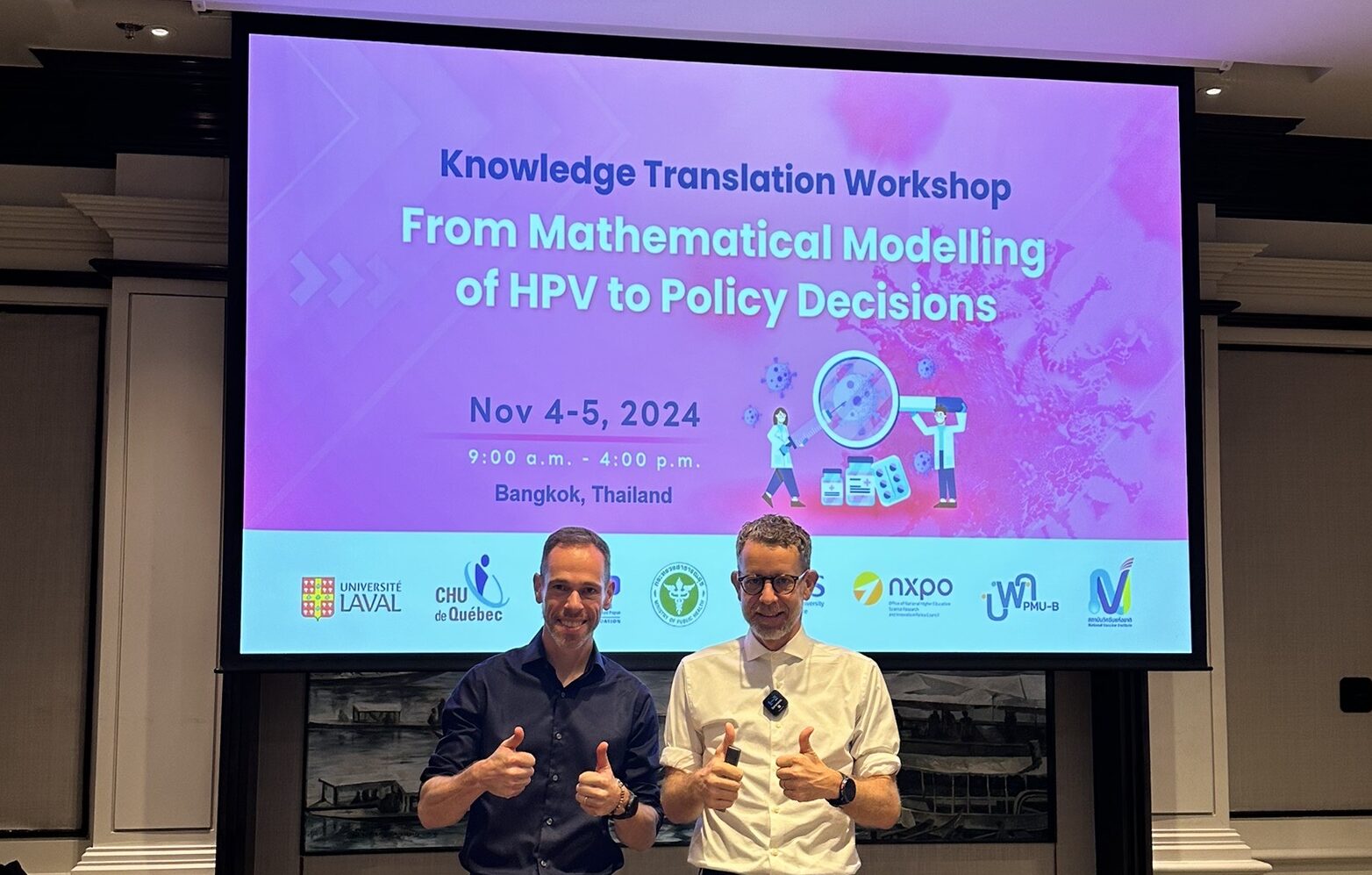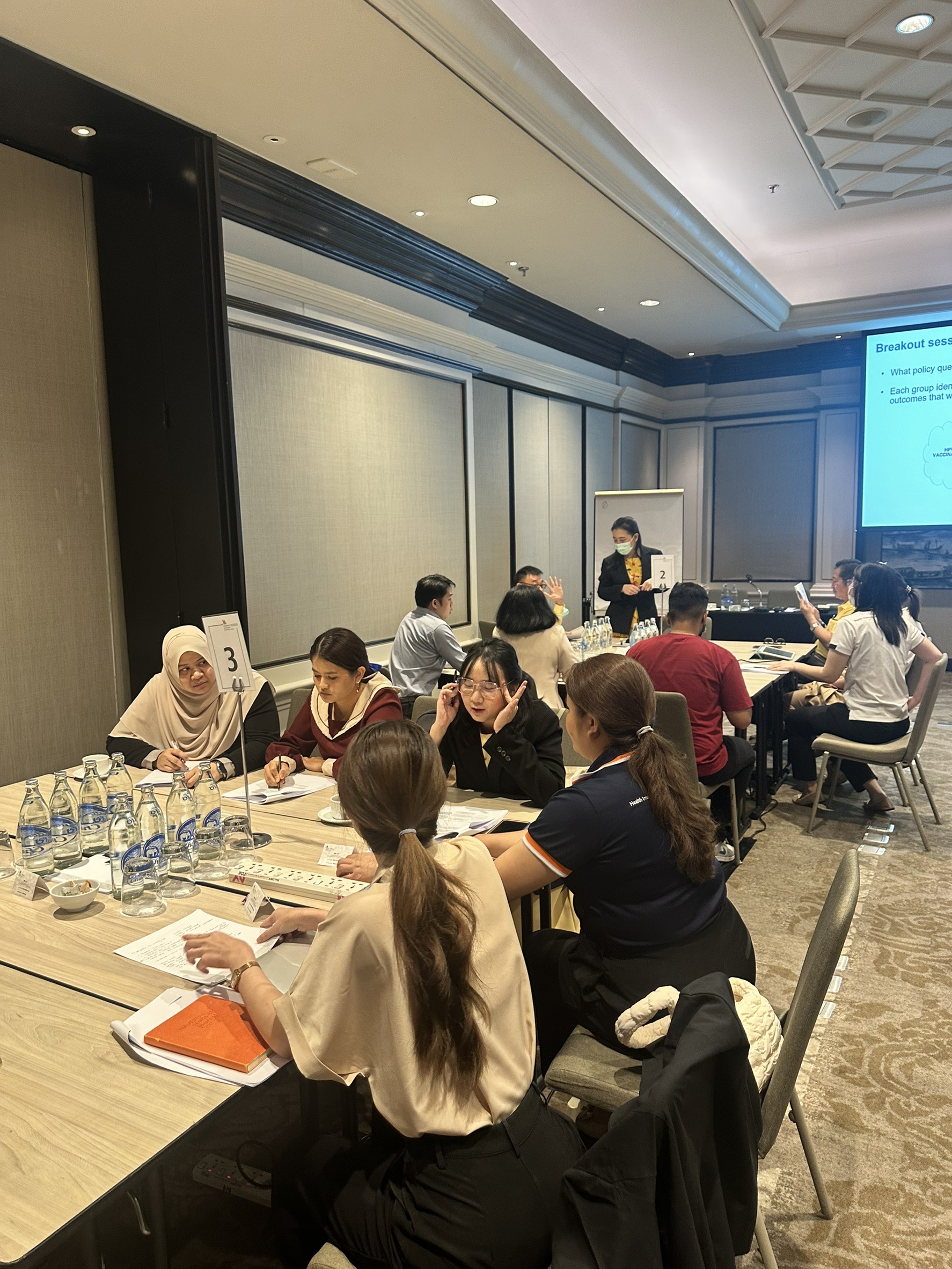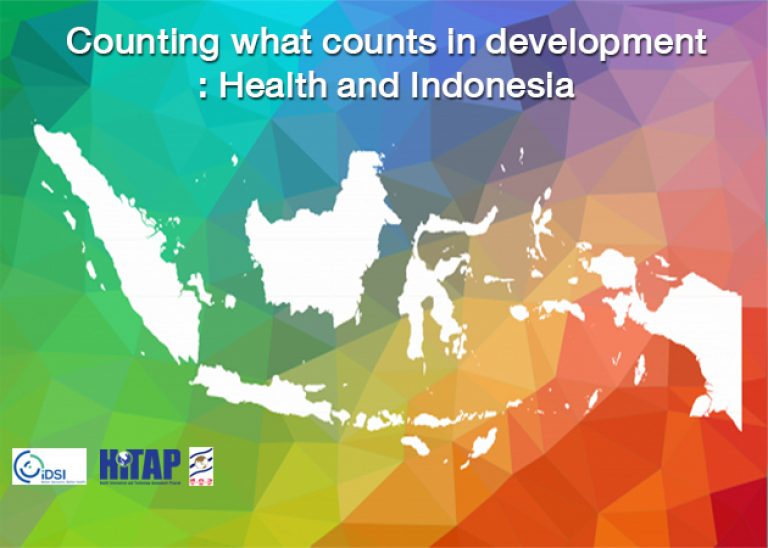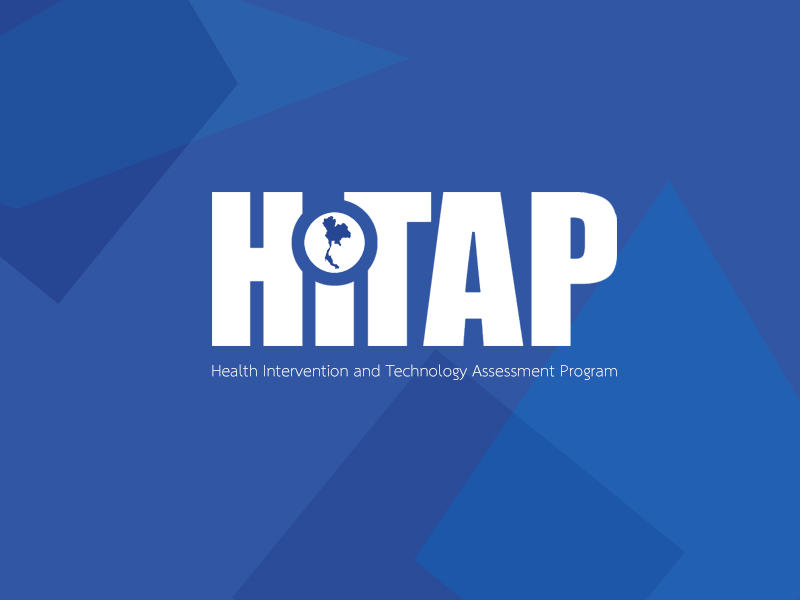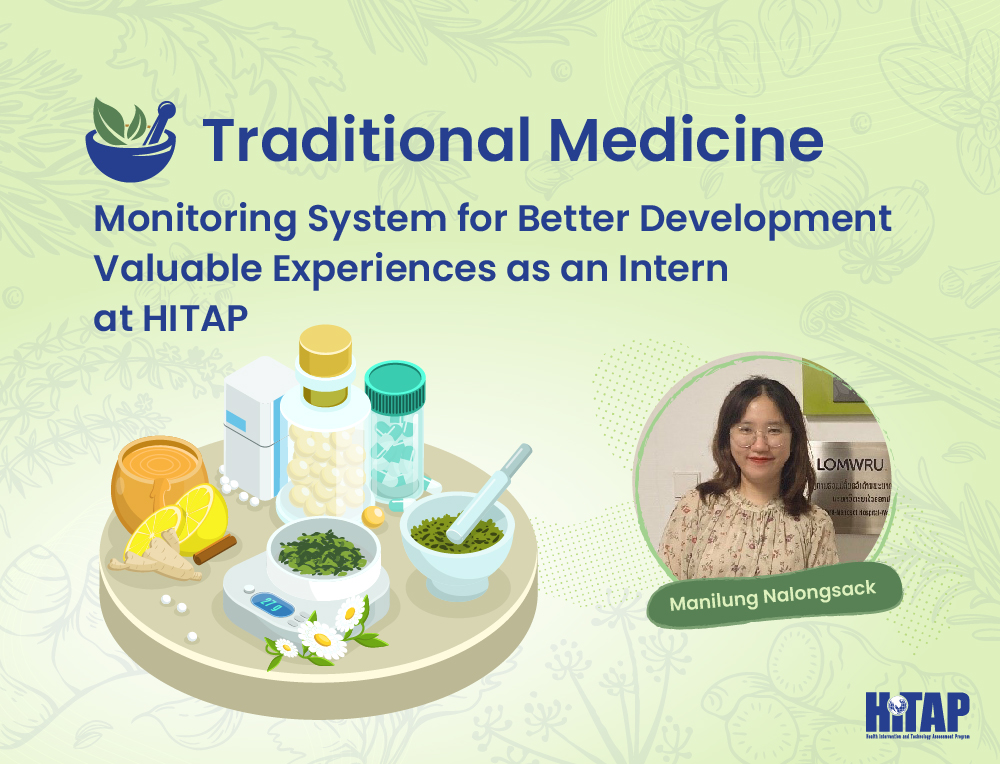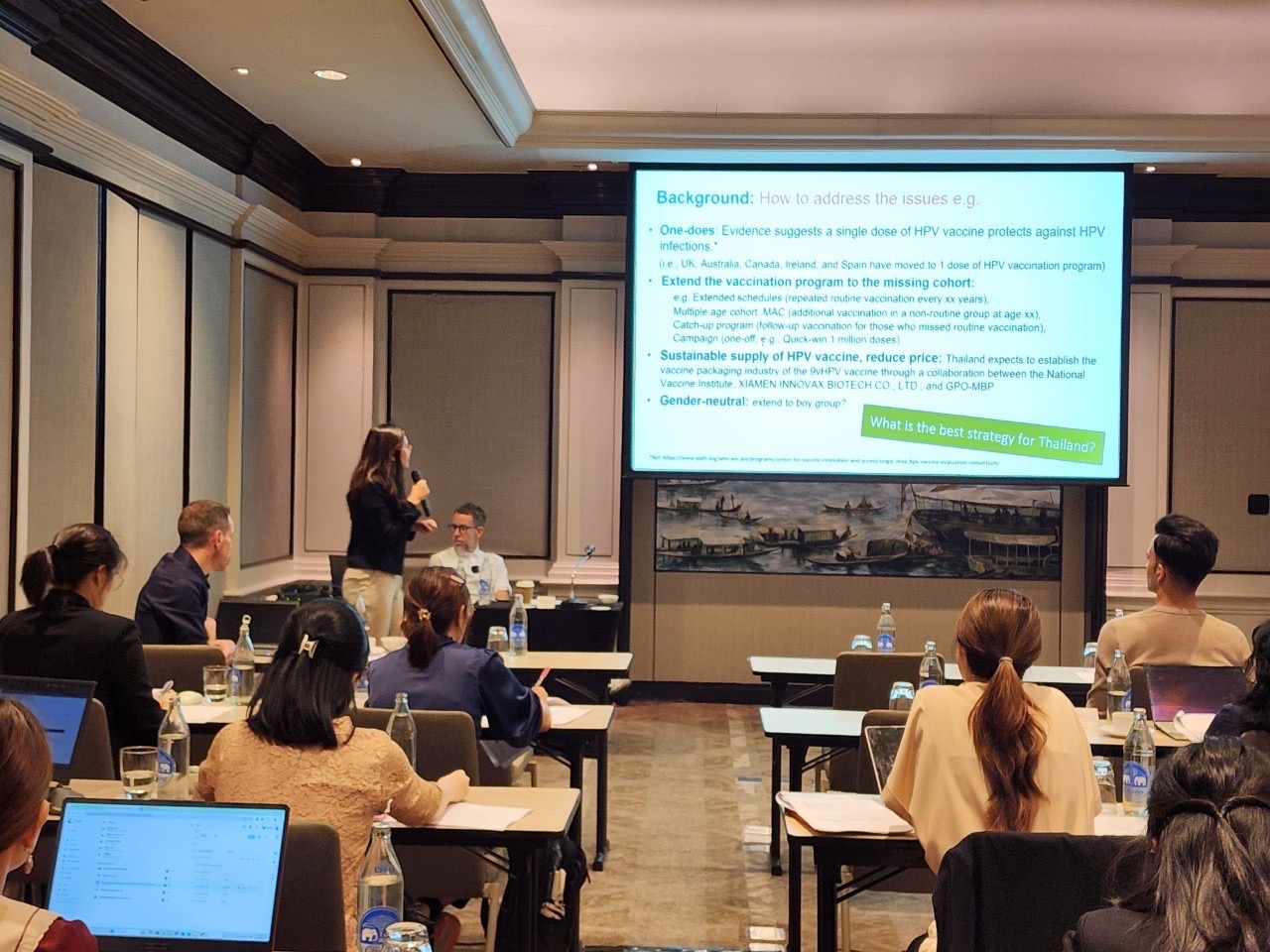
This article is part 2 of the blog series: “Knowledge Translation: The Key to Turning Mathematical Models from a Black Box into a Powerful Tool for Policy Decision-Making”
In part 1 of this blog series, we discussed the role of mathematical models in supporting evidence-based public health decisions. While models can offer valuable insights, their complexity often makes them difficult to interpret and apply. Without a clear understanding of how models work and what the results mean, their usefulness for policy can be limited.
This second blog explores how Thailand applied a Knowledge Translation (KT) process to strengthen the connection between researchers and policymakers. Through workshops and stakeholder engagement, the KT process helped ensure that the results of mathematical modeling were well understood, relevant, and ready for use in national policy planning.
Knowledge Translation: Bridging the Gap
In Thailand, the use of mathematical infectious disease models, especially for economic evaluations, is still not widespread in policymaking processes. The introduction of a highly detailed individual-based model like HPV-ADVISE presents both an opportunity and a challenge. Since HPV-ADVISE, the dynamic model used in this evaluation, needs to be adjusted to the Thai context, it is important to understand how the model works and what types of outputs it can generate. HPV-ADVISE is an individual-based model, which means it simulates a virtual population where each individual has their own characteristics—such as gender, age, infectious status, and sexual behavior—and interacts with others based on real-world patterns. However, this model is significantly more complex to run, interpret, and explain compared to traditional models like SIR or SEIR. It requires large volumes of high-quality input data, advanced mathematical techniques, and technical expertise in data science and modeling. (5)
Turning Complexity into Practical Insight
To address these challenges, it is essential to bridge the gap between complex modeling analyses and practical public health applications. Approaches such as ensuring transparency in the modeling process and translating results into clear, actionable messages tailored to the needs of decision-makers can help make these models more accessible and practical. One effective way to achieve this is through a Knowledge Translation (KT) workshop or practice, which provides a structured platform for fostering better communication and collaboration between modelers and decision-makers. The workshop helps clarify how the models work and improve their practical application. This approach not only enhances the understanding of complex models such as those modeling HPV transmission and diseases but also accelerates the uptake of key findings in policy development and public health interventions.
HPV Modeling in Practice: The KT Workshop
Given the challenges associated with using complex models for the transmission of infections, such as HPV and associated diseases, the HPV-research team, including modelers from Laval University and HITAP, arranged a KT workshop applied to HPV modeling. This workshop aimed to help maximize the adoption of evidence from mathematical models by explaining methods and results, refining audience-specific messages, and addressing any identified knowledge gaps.
An individual-based dynamic model developed by Brisson et al. [Ref?], which was used in the economic evaluation of the 9-valent (9vHPV) HPV vaccine in Thailand, was presented and discussed during the KT workshop held on November 4–5, 2024. The workshop brought together key policymakers and academics involved in infectious disease prevention, including representatives from the National Vaccine Institute (NVI), the National List of Essential Vaccines Committee (NLEV), the Department of Disease Control (DDC), and leading academic institutions. The workshop consisted of two main sessions, which were modeling informative and technical parts in classroom format, designed to engage participants deeply through interactive learning with the lecturers. During the discussion session, participants were intentionally divided into four groups: academia, policymakers, manufacturers, and students —to explore potential scenarios and expected characteristics they would like the HPV mathematical modeling to project.
How Knowledge Translation Workshops Add Value: Reflections from Policymakers
Since research study results aim to inform future policy decisions, a stakeholder consultation or collaborative meeting is usually held after the research is finished (9). During this meeting, policymakers and other stakeholders provide feedback from their practical perspectives to ensure the findings are relevant, usable, and aligned with policy needs. Therefore, after the HPV-research team from Laval University and HITAP completed the evaluation, we conducted a stakeholders collaborative meeting to present the preliminary results upon the consensus from the initial meeting before the project started. The meeting also included discussions on the expected policy questions to address and the expected results of the mathematical model that Thailand can use to guide its HPV vaccination program during the KT workshop. The stakeholder consultation meeting of the HPV research team was held on May 23, 2025, with representatives from similar organizations as in the KT workshop. The presentation was well-received, and the results were positively acknowledged by attendees.
Dr. Manatsanan Khansai, a Vaccine Technical Officer from the National Vaccine Institute of Thailand, is a key stakeholder who will use the modeling results to inform future HPV-related policies. She participated in both the KT workshop and the stakeholder consultation meeting, where results from the HPV vaccination model were presented. In her interview with HITAP, Dr. Khansai emphasized the value of the KT process and effective communication in enhancing mutual understanding between policymakers and modelers. She noted that the process allowed both sides to “learn together” and engage in rational, step-by-step dialogue. This collaborative approach helped align concrete technical assumptions from the modeling team with national priorities and policy concerns.
Dr. Khansai also pointed out that the translation of knowledge led to appreciation during the preliminary result presentation meeting, with clear mutual understanding since some unclear or ‘black box’ parts of the model had already been discussed. Importantly, she observed that stakeholders were able to raise and resolve concerns effectively, leaving “no questions unanswered,” and reaffirmed her view that the KT process was instrumental in making infectious disease modeling accessible and actionable for policy use.
Therefore, we found that the KT workshop played a key role in increasing acceptance and understanding of the use of mathematical models in policy settings.
What Thailand Needs Now and Conclusion
Thailand’s journey with HPV vaccination highlights the critical need for KT process. While the country has made significant progress in improving its HPV vaccination program, assessing long-term impacts across diverse populations remains a challenge. This is where mathematical modeling, such as the HPV-ADVISE model used by local researchers, plays an essential role. It allows policymakers to explore “what if” scenarios, evaluate outcomes, and make better-informed decisions.
To harness the advantages of mathematical models, the researcher must consider arranging KT workshop or practice. This includes transparent communication, active collaboration between researchers and policymakers, and the translation of complex modeling results into practical. With effective KT, mathematical models can shift from black boxes to trusted tools, ensuring public health policies are both evidence-based and impactful.
Thailand’s use of KT in the HPV vaccination project shows that building mutual understanding between researchers and decision-makers is essential. By creating space for open dialogue and co-learning, KT helps ensure that complex evidence can be effectively translated into policy. As health challenges grow more complex, KT plays a vital role in ensuring that evidence is effectively communicated and applied in policymaking.
Writer
Phornnaphat Chertchinnapa
The writer acknowledges the use of OpenAI’s ChatGPT (July 2025 version) for grammar checking and phrasing assistance.
Interviewee & Reviewer
Dr. Manasanan Khansai/Dr. Manatsanan Khansai
Editor
Dr. Thanchanit Thaipitakwong
Reference
- Cassidy R, Singh NS, Schiratti PR, Semwanga A, Binyaruka P, Sachingongu N, et al. Mathematical modelling for health systems research: a systematic review of system dynamics and agent-based models. BMC Health Serv Res. 2019 Nov 19;19:845.
- Pung R, Kucharski AJ. Building in-house capabilities in health agencies and outsourcing to academia or industry: Considerations for effective infectious disease modelling. Epidemics. 2024 Dec 1;49:100802.
- Wang Y, Luangasanatip N, Pan–ngum W, Isaranuwatchai W, Prawjaeng J, Saralamba S, et al. Assessing the cost-effectiveness of COVID-19 vaccines in a low incidence and low mortality setting: the case of Thailand at start of the pandemic. Eur J Health Econ. 2023 July 1;24(5):735–48.
- Luangasanatip N, Painter C, Pan-ngum W, Saralamba S, Wichaita T, White L, et al. How to model the impact of vaccines for policymaking when the characteristics are uncertain: A case study in Thailand prior to the vaccine rollout during the COVID-19 pandemic. Vaccine. 2023 July 25;41(33):4854–60.
- Brisson M, Boily MC. TECHNICAL APPENDIX HPV-ADVISE LMIC.
- Drolet M, Laprise JF, Martin D, Jit M, Bénard É, Gingras G, et al. Optimal human papillomavirus vaccination strategies to prevent cervical cancer in low-income and middle-income countries in the context of limited resources: a mathematical modelling analysis. Lancet Infect Dis. 2021 Nov;21(11):1598–610.
- CDC. CFA: Behind the Model. 2025 [cited 2025 Oct 15]. Behind the Model: How Scenario Modeling Can Inform Public Health Decision-Making. Available from: https://www.cdc.gov/cfa-behind-the-model/php/data-research/scenario-modeling/index.html
- HITAP. Full report: Guidance on use of modelling for policy responses to COVID-19 – HITAP [Internet]. 2020 [cited 2025 Oct 15]. Available from: https://www.hitap.net/en/document/covid19-policy-modelling-guidance/
- Chaikledkaew U, Kittrongsiri K. Guidelines for Health Technology Assessment in Thailand (Second Edition)-The Development Process.

